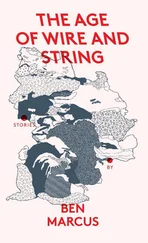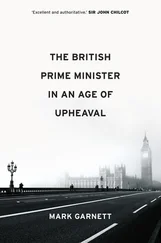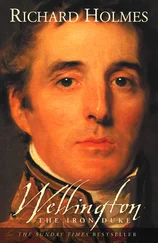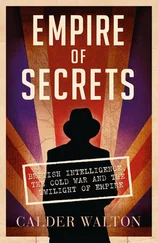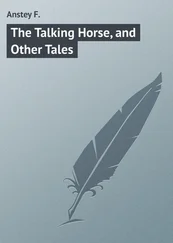Redcoat
The British Soldier in the Age of Horse and Musket
Richard Holmes

HarperCollins Publishers 1 London Bridge Street London SE1 9GF
www.harpercollins.co.uk
First published in Great Britain by HarperCollins Publishers 2001
Copyright © Richard Holmes 2001
Richard Holmes asserts the moral right to be identified as the author of this work
Maps by John Gilkes
All rights reserved under International and Pan-American Copyright Conventions. By payment of the required fees, you have been granted the non-exclusive, non-transferable right to access and read the text of this e-book on screen. No part of this text may be reproduced, transmitted, downloaded, decompiled, reverse engineered, or stored in or introduced into any information storage and retrieval system, in any form or by any means, whether electronic or mechanical, now known or hereinafter invented, without the express written permission of HarperCollins e-books.
HarperCollins Publishers has made every reasonable effort to ensure that any picture content and written content in this ebook has been included or removed in accordance with the contractual and technological constraints in operation at the time of publication.
Source ISBN: 9780006531524
Ebook Edition © 2011 ISBN: 9780007374052
Version 2016-08-11
‘Until yesterday I had not seen any British infantry under arms since the troops from America arrived, and, in the meantime, have constantly seen corps of foreign infantry. These are all uncommonly well dressed in new clothes, smartly made, setting the men off to great advantage – add to which the coiffure of high broad-topped shakos, or enormous caps of bearskin. Our infantry – indeed, our whole army – appeared at the review in the same clothes in which they had marched, slept and fought for months. The colour had faded to a dusky brick-red hue; their coats, originally not very smartly made, had acquired by constant wearing that loose easy set so characteristic of old clothes, comfortable to the wearer, but not calculated to add grace to his appearance. Pour surcroit de laideur, their cap is perhaps the meanest, ugliest thing invented. From all these causes it arose that our infantry appeared to the utmost disadvantage – dirty, shabby, mean, and very small. Some such impression was, I fear, made on the Sovereigns, for…they remarked to the Duke what very small men the English were. “Ay,” replied our noble chief “they are small; but your Majesties will find none who fight so well”.’
Captain Cavalié Mercer, Royal Horse Artillery, describing a review of the British army by the Allied sovereigns.
Paris 1815
Cover Page
Title Page
Copyright
Epigragh
INTRODUCTION
MAPS
I THE AGE OF BROWN BESS
THAT ARTICLE THERE
SCARLET AND BLUE
TO FLANDERS, PORTUGAL AND SPAIN
RED COAT AND BROWN BESS
ENGLAND, HOME AND BEAUTY?
II ALL THE KING’S HORSES AND ALL THE KING’S MEN
SWORD AND STATE
LINE OF BATTLE
III BROTHERS OF THE BLADE
SCUM OF THE EARTH
EPAULETTE GENTRY
IV HORSE, FOOT, GUNS – AND WOUNDS
MARCHING REGIMENTS
GALLOPING AT EVERYTHING
THE NIMBLE GUNNER
CURRENCY OF WAR
V HOME FIRES
MORE LIKE PRISONS
DAUGHTERS OF THE REGIMENT
CARROT AND STICK
VI FOREIGN FIELDS
CHAIN OF COMMAND
THE TROOPER’S ON THE TIDE
THE PAINFUL FIELD
THE IMMINENT DEADLY BREACH
CAPTAINS IN OPEN FIELD
EPILOGUE
WORTHY OF REMEMBRANCE
References
Bibliography
Index
Acknowledgements
About the Author
Praise
Also By Richard Holmes
About the Publisher
I HAVE NEVER really got on with Bertolt Brecht, but cannot deny that he had a point in asking, however rhetorically, whether Caesar crossed the Rubicon all by himself. Of course he did not, any more than Cornwall is surrendered at Yorktown on his own, Wellington won Waterloo single-handed, or Cardigan hacked down the Valley of Death at Balaclava with only his bright bay charger Ronald for company. This is not a book about great, or even not-so-great, generals, though both feature in it from time to time. And it is not about battles either, even if we are rarely very far away from them. Instead, its concern is for the raw material of generalship and the pawns of battle, the regimental officers and soldiers (and their wives, sweethearts and followers of a less defined and sometimes rather temporary status) that served in the British army in a century when it painted the world red.
Hollywood is entertainment rather than history, though its tendency to use the past as a vehicle for story telling blurs fact and fiction so that the latter assumes, however unintentionally, the authority of the former. The redcoat has recently featured on the screen in a role depressingly reminiscent of that assigned to the German army after the Second World War. Brutal or lumpish soldiers are led by nincompoops or sadists with the occasional decent fellow who eventually allows a mistaken sense of duty to win the battle with his conscience. Watch Rob Roy, Last of the Mohicans or, most recently, The Patriot, and you will wonder how this army of thugs and incompetents managed to fight its way across four continents and secure the greatest empire the world has ever seen.
That it was an army born of paradox, forged in adversity, often betrayed by the government it obeyed and usually poorly understood by the nation it served, is beyond question. It drank far too much and looted a little too often, and its disciplinary code threw a long and ugly shadow onto the early twentieth century. It sometimes lost battles: we shall see it ground arms in surrender at Saratoga in 1777 and Yorktown in 1781, wilt under Afghan knives on the rocky road from Kabul in 1842, and quail under Russian fire before Sevastopol’s Great Redan in 1855. Yet it very rarely lost a war. In victory or defeat it had a certain something that flickers out across two centuries like an electric current. Little of that was generated by a military organisation which was a characteristically British mixture of tradition wrapped in compromise, and fuelled by the quest for place, perquisites or status. And, important though high command was, this was an army that fought as hard when mishandled by Beresford at Albuera in 1811 as it did when commanded with genius by Wellington at Salamanca the following year. It drew its enormous tensile strength not simply from the fear of punishment and the lure of reward, though both were important, but from that elusive chemistry that binds men together in the claustrophobic world of barrack-room and half-company, officers’ and sergeants’ messes, smoke-wreathed battle line and darkling campsite. If I deplore its many faults, I love it for its sheer, dogged, awkward, bloody-minded endurance, the quality that inspired its exasperated adversary Marshal Soult to complain after Albuera: ‘There is no beating these British soldiers. They were completely beaten and the day was mine, but they did not know it and would not run.’
A word about methodology. The architecture of this book is my own, though there is no doubting the fact that I learnt how to ply my ruler and dividers a quarter of a century ago in the Sandhurst drawing office of Messrs Duffy and Keegan. Sir John Fortescue’s venerable multi-volume History of the British Army (superseded in many areas but still surprisingly useful in others) helped form a solid foundation. For the book’s framework I am fortunate in being able to rely on scholars who have provided me with the academic equivalent of RSJs, those broad, load-bearing studies, which no professional historian can do much work without. These are works by authors like Alan Guy and John Houlding for the army of the eighteenth century, Michael Glover, Ian Fletcher and Philip Haythornthwaite for Wellington’s army, and Hew Strachan, Edward Spiers and Donald Huffer for the army of the early nineteenth century.
Читать дальше



